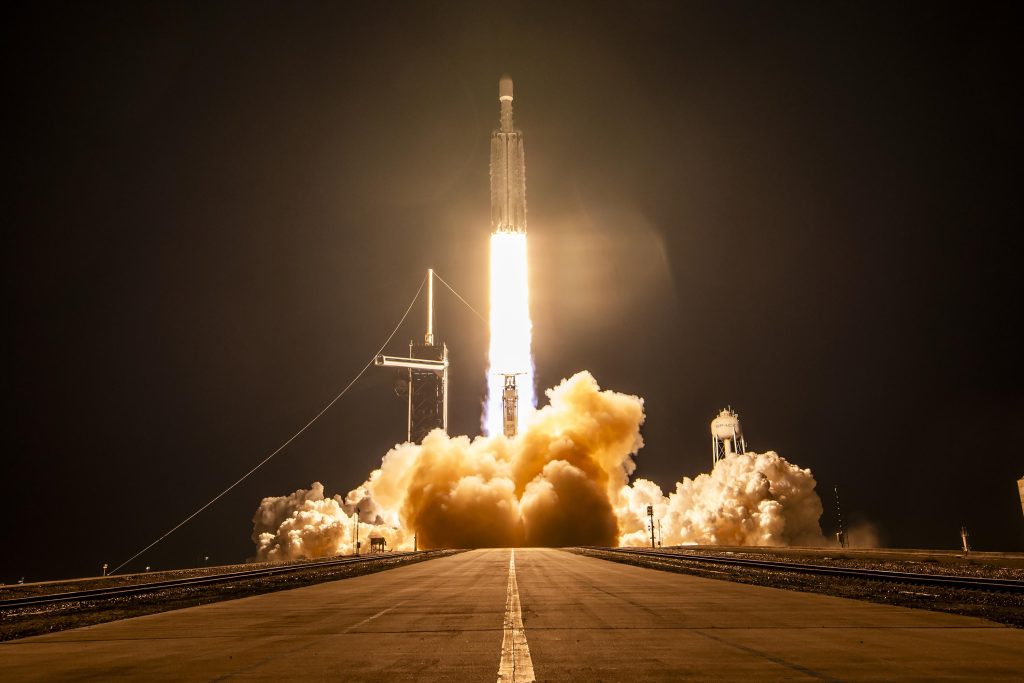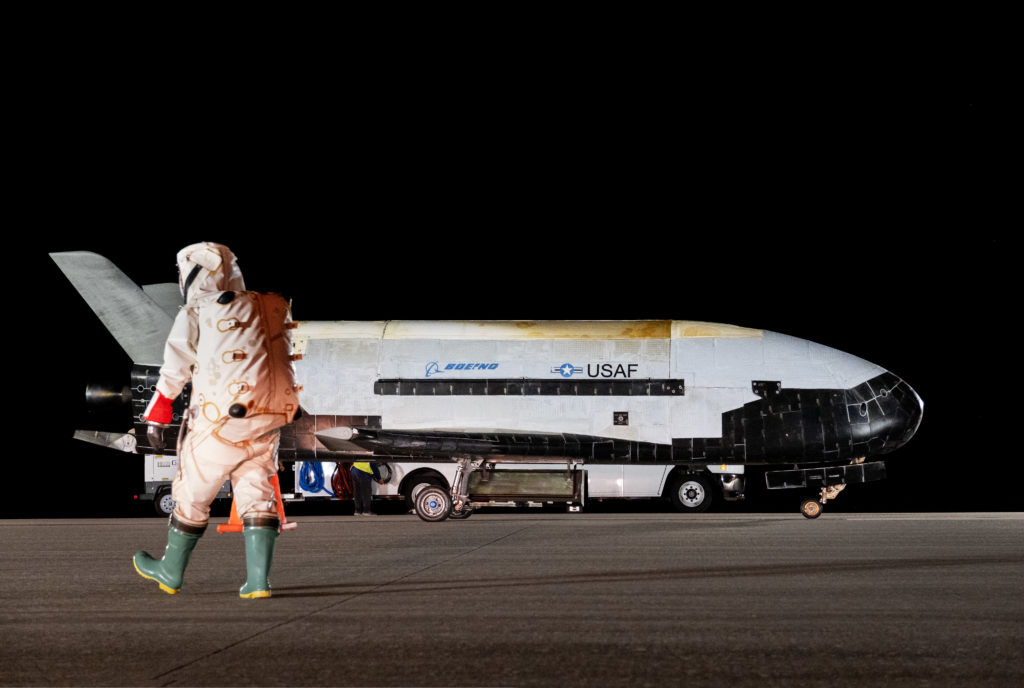“Watch me do this kickflip” is essentially what top Space Force officials said on Oct. 10 when they announced the secretive X-37B Orbital Test Vehicle will soon start aerobraking, a maneuver where an orbiting space vehicle dips into the atmosphere to create drag and slow down without burning up its limited supply of fuel.
It will be the X-37’s first time attempting such a maneuver, according to a Space Force press release, though other spacecraft have performed it in the past. While few people will actually see this feat, one expert said it could inform future spacecraft design as the Space Force pursues the ability to quickly maneuver its assets in orbit.
“Changing orbital planes typically takes quite a bit of fuel,” said Charles Galbreath, senior resident fellow at the Mitchell Institute for Aerospace Studies. “If they can demonstrate a fuel savings through this experiment, through this operation, it could be significant for future operations.”
The 29-foot-long X-37 launches into space aboard a rocket but can re-enter the atmosphere, land on a runway, then launch in orbit again, much like its crewed cousin, the Space Shuttle. The vessel has completed six missions since it first launched in 2010, and its current mission started Dec. 28, 2023, aboard a SpaceX Falcon Heavy rocket taking off from Kennedy Space Center, Fla.
For this mission, the uncrewed X-37 carries modules to study the effects of radiation on plant seeds provided by NASA. Unlike previous launch vehicles, the larger Falcon Heavy rocket likely put the X-37 in a higher orbit than ever before.
The higher the orbit, the more pronounced the effect of the Van Allen radiation belts, which NASA describes as two “enormous donuts” of high energy radiation particles trapped around Earth by the planet’s magnetosphere. How the plant seeds respond to that radiation could inform future crewed missions on long space flights, the Space Force said in a November press release.

Besides radiation, the X-37 is also supposed to test new space domain awareness technologies used to track objects moving through space. It is not clear whether these tests are related to the aerobraking maneuver. During the maneuver, the Space Force said the X-37 would “safely dispose of its service module components,” which likely refers to the equipment used to carry out the experiments.
There could be several reasons for doing so, Galbreath said. If the tests are complete and the equipment is no longer needed, getting rid of the modules might cut down on mass and make the reentry and recovery process easier and safer. He was also reminded of the Cold War-era CORONA program, where spy satellites in orbit jettisoned film capsules that reentered the atmosphere and drifted from parachutes before being snagged by passing C-130 aircraft.
“We’re well beyond that technology where we’re required to do something like that, but it kind of reminds me of that sort of operation,” Galbreath said. “You can speculate about the deployment of sensors, or the deployment of some sort of reentry vehicle from the X-37 to be recovered.”
No matter what the modules are up to, the aerobraking itself could prove valuable as the Space Force pursues dynamic space operations, where satellites can launch into orbit faster and move around quickly once they get there.
Last year, Chief of Space Operations Gen. B. Chance Saltzman described the concept as “almost continuous maneuvering, so that the satellites from any one radar shot looks like it’s maneuvering and it’s just kind of constantly changing its orbit as it goes through—preserving mission but changing its orbit.”
Such maneuvering is not possible with most existing USSF satellites, which only carry enough propellant for “station keeping” and cannot be refueled. At the time, Saltzman said, dynamic operations were only in the “good idea phase.”
Aerobrake maneuvering may be one brick on the road to leave that phase. The X-37 is currently in a highly elliptical orbit, meaning its path takes the shape of a giant oval with Earth at one end, where the vessel reaches a perigee close to Earth’s atmosphere before swinging back out and high above.
The X-37 “is probably going to change its point of closest approach, its perigee, so that it impacts the atmosphere more than it would have otherwise,” Galbreath explained.
As the atmospheric pressure increases, the X-37 can use its wings to slow down or change its inclination to set out on a different new course, “so there’s a lot of opportunities that you can use the aerodynamics of the upper atmosphere for,” he added. “You can actually change your inclination, a whole new orbital plane, because of the atmospheric pressure.”

With their large solar arrays and non-aerodynamic design, most satellites in orbit today are not built for aerobraking, but the upcoming maneuvers could inform future designs if the Space Force were interested in building a newer cousin of the X-37, Galbreath said.
“It also opens up the possibility of operating vehicles in lower orbits that could use the atmosphere to maneuver on a regular basis while still maintaining enough orbital velocity for the life of its mission,” he added. “So that can create some very interesting opportunities for dynamic space operations that don’t require as much onboard fuel.”
Space Force officials indicated the aerobrake could inform the branch’s future operations.
“This first of a kind maneuver from the X-37B is an incredibly important milestone for the United States Space Force as we seek to expand our aptitude and ability to perform in this challenging domain,” Saltzman said in the Oct. 10 release.
“It’s exciting to see the X-37 team, the Space Force, and the Air Force pushing new boundaries with this test,” Galbreath said. “Hopefully they can talk about the results someday and how that’s going to impact future architectures.”
